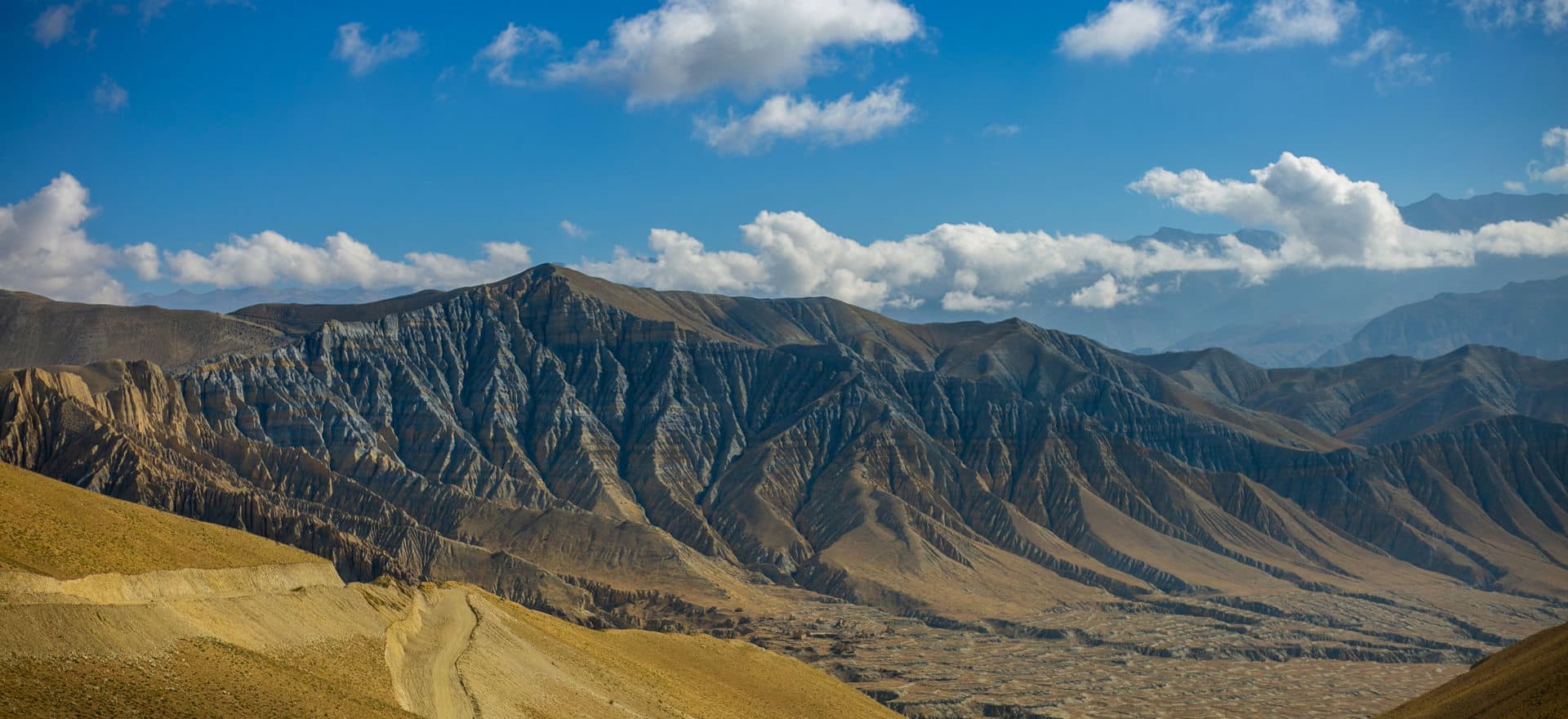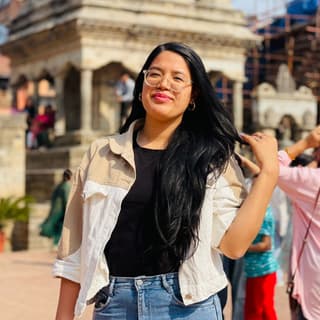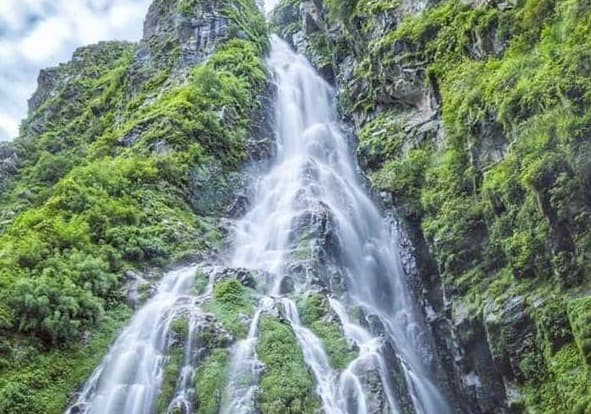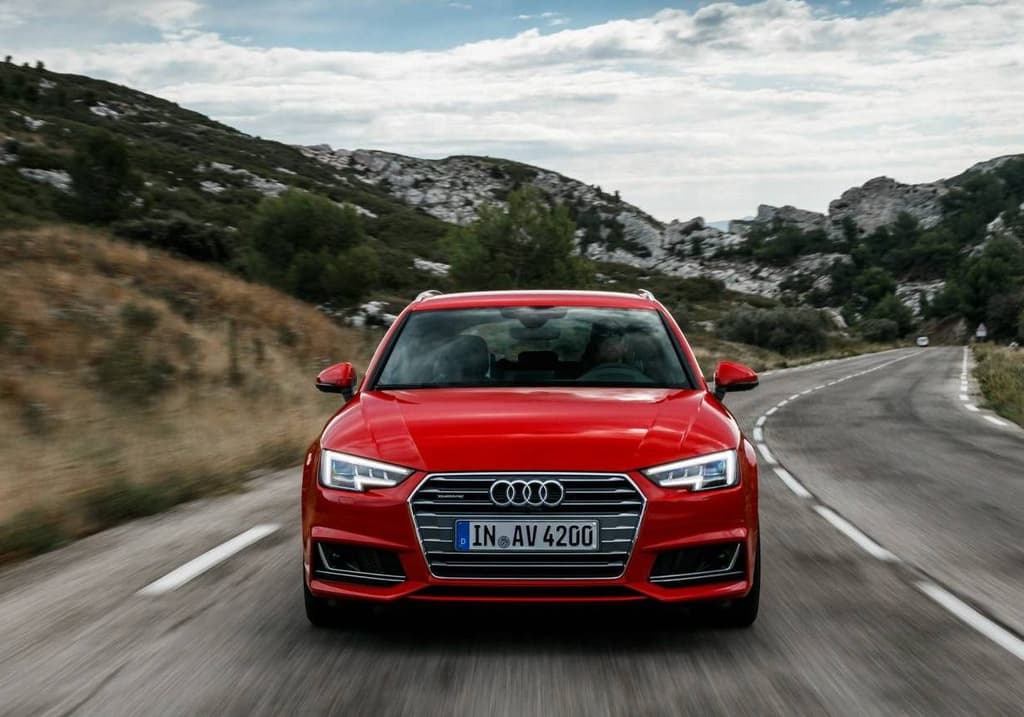Nepal is a year-round destination, offering diverse experiences and breathtaking landscapes across its four distinct seasons: spring, summer/monsoon, autumn, and winter. The country's climate is mainly influenced by the monsoon system and the stark contrast in topography, ranging from tropical to Arctic-like regions.
Spring (March-May) in Nepal is characterized by mild temperatures, blossoming rhododendron forests, and active wildlife, making it a great time for trekking in lower altitudes and enjoying Nepal's flora and fauna. Summer (June-August) is the monsoon season, and despite the substantial rainfall making outdoor activities slightly challenging, there are opportunities to explore rainshadow areas like Mustang and Dolpo.
Autumn (September-November) is often considered the prime time to visit Nepal. Post-monsoon, the skies are clear, offering unobstructed views of the Himalayas. The weather is dry, and significant cultural festivals occur during this period. Winter (December-February) is the coldest season, making high-altitude trekking difficult. However, it's an excellent time to explore the tropical Terai region, which is a hotspot for wildlife.
The best time to visit Nepal depends on the activities you plan to undertake. Always check the current weather forecasts, take professional advice for high-altitude adventures, and remember to monitor the latest travel advisories and safety guidelines before planning your trip.
Climate Overview
Nepal's climate is as intricate and diverse as its vast geography. The weather patterns are largely influenced by three major seasons - summer, monsoon, and winter. However, due to the country's significant altitude variations, these seasons impact different regions in unique ways.
The Terai Plains: The Terai Plains, located along the southern border of Nepal, are marked by a subtropical climate. Summer in this region, from March to June, brings hot and humid conditions, with temperatures often soaring above 40°C (104°F). Conversely, winters, from December to February, are cool and mild, making it an ideal time for wildlife safaris in the national parks. The monsoon season here, which typically extends from late June to early September, is characterized by heavy, daily rainfall.
The Midlands and Hills: This climatic zone, encompassing popular cities like Kathmandu and Pokhara, enjoys a temperate climate. Summer temperatures here are usually moderate, hovering between 25-30°C (77-86°F). The winters, in contrast, are chilly with temperatures dropping to around 0-5°C (32-41°F). Due to the pleasant climate throughout the year, these areas are always bustling with cultural activities and festivals.
The Himalayan Region: Home to some of the highest peaks in the world, the Himalayan region of Nepal experiences an extreme, alpine climate. Winters here are intensely cold, with temperatures frequently falling below freezing point, and many areas become inaccessible due to heavy snowfall. Summers, while still cool, offer a brief respite from the cold. Despite the seasonal changes, the region stays relatively dry throughout the year, which aids in the stunning visibility of the majestic peaks.
Best Time to Visit
Trekking Season - Autumn (September to November)
Autumn, spanning from September to November, is widely acknowledged as the best trekking season in Nepal. The monsoon season has just ended, leaving clear skies, and the dust and haze have been washed away, revealing stunning panoramic views of the towering Himalayan peaks.
This period brings optimal weather conditions for trekking. Days are generally sunny with moderate temperatures, while nights, although cooler, are not excessively cold. These conditions provide a comfortable trekking environment, enabling hikers to fully absorb the surreal beauty of their surroundings.
Autumn is also a time when some of the most popular trekking routes in Nepal, such as the Everest Base Camp, Annapurna Circuit, and Langtang Valley, become more accessible and less hazardous due to the minimal precipitation and reduced risk of landslides. The trails are less muddy and the teahouses that were closed during the monsoon reopen, allowing trekkers to rest and recharge in comfortable accommodations.
It's worth noting that autumn is the peak tourist season, so the popular trails may be relatively crowded compared to other times of the year. However, the vibrant energy of fellow trekkers and the shared camaraderie can greatly enhance the trekking experience.
This season coincides with major Nepalese festivals such as Dashain and Tihar, providing trekkers with the unique opportunity to experience local cultural celebrations during their journey.
Before embarking on a trek during this season, it's advisable to book accommodations and guides in advance due to the high demand. Also, be prepared for sudden weather changes that can occur in the Himalayas, and always ensure that you have appropriate trekking gear.
Cultural Immersion - Spring (March to May)
Spring, stretching from March to May, is a splendid time to immerse oneself in Nepal's rich and vibrant culture. As the harsh winter subsides, Nepal's landscapes are transformed with the bloom of rhododendrons and other wildflowers, painting the valleys in a riot of colors. The weather is warm, with clear skies and mild temperatures, making it perfect for exploring Nepal's cultural treasures.
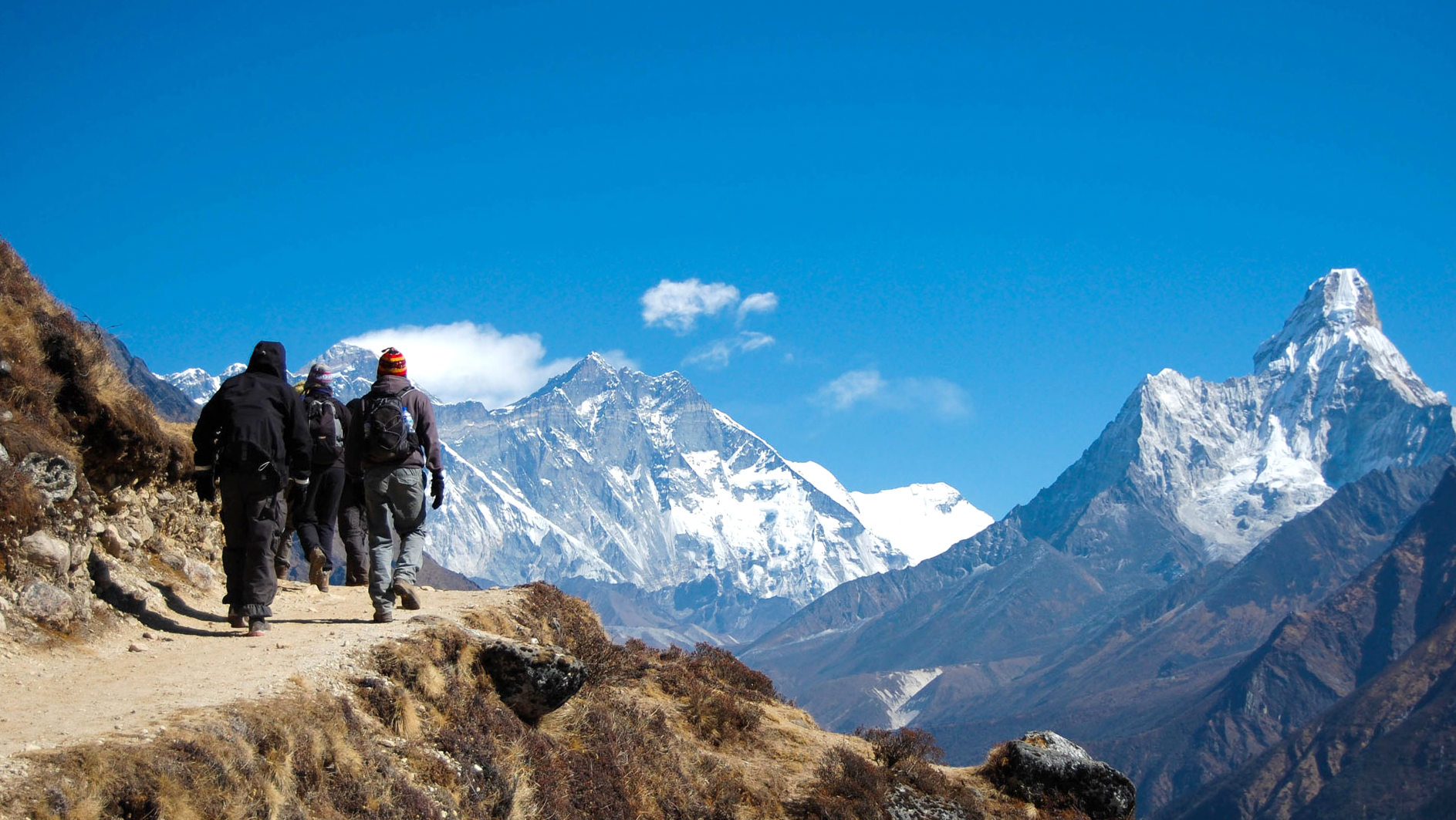
This season offers a unique opportunity to experience some of the country's most significant festivals. Holi, the festival of colors, is celebrated with much enthusiasm, with locals and tourists alike smearing each other with colored powders and dyes, signifying the victory of good over evil and the arrival of spring.
Another significant event is Ghode Jatra, the horse festival, a grand spectacle where horses are paraded and raced in Tundikhel, the central open field in Kathmandu. These festivals and others celebrated during this season, offer fascinating insights into the country's cultural traditions and religious beliefs.
Spring is also an ideal time for city sightseeing and exploration of UNESCO World Heritage Sites. Kathmandu Valley, with its cluster of historical cities including Kathmandu, Patan, and Bhaktapur, boasts a plethora of ancient temples, palaces, and courtyards. The weather is conducive to leisurely walks through these sites, discovering the intricate wood and stone carvings, appreciating the traditional architecture, and learning about the history and mythology associated with these structures.
Additionally, it's a great time to visit the cultural hubs of Pokhara and Lumbini. Pokhara, besides its natural beauty, offers insights into the Gurung culture, and Lumbini, the birthplace of Buddha, is a spiritual center with beautiful monasteries representing various Buddhist traditions from around the world.
Visit to Nepal in spring allows for not only the exploration of the country's stunning natural beauty but also a deep dive into its rich cultural heritage. It's a time when the country comes alive with celebrations, and the warm hospitality of the Nepalese people adds to the memorable experiences.
Wildlife Expedition - Winter (December to February)
Winter, extending from December to February, is an exceptional time for wildlife expeditions in the Terai lowlands of Nepal. While the higher altitudes of the Himalayas are in the grip of harsh winter, the plains of the Terai region, home to some of the most diverse wildlife in Asia, experience mild temperatures, making it an excellent time for wildlife exploration.
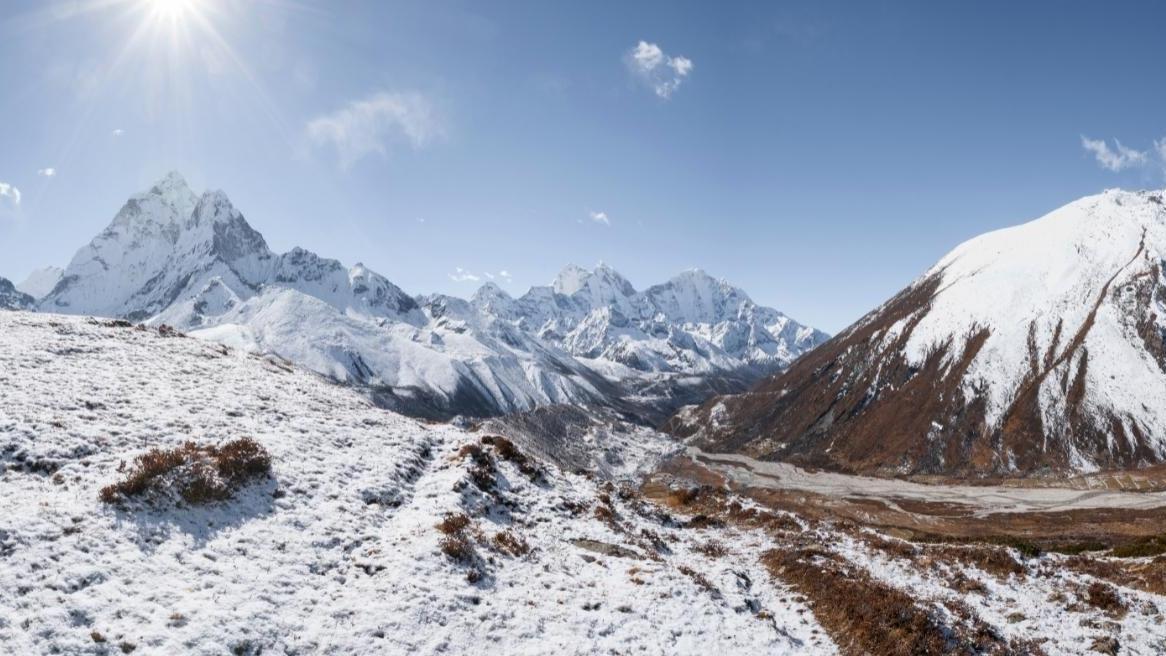
The most prominent wildlife destinations in Nepal are the Chitwan National Park and Bardia National Park. During winter, the vegetation in these parks is less dense, improving visibility and increasing the chances of spotting animals. These parks are home to diverse species, including Bengal tigers, one-horned rhinoceros, elephants, leopards, sloth bears, and various species of deer.
Chitwan National Park, a UNESCO World Heritage site, offers exciting wildlife experiences through jungle safaris on foot, by jeep, or even atop an elephant. Bardia National Park, though less visited, offers a more secluded and raw wildlife experience. With fewer tourists, you can relish a more personal and immersive encounter with nature.
Winter is also an excellent season for birdwatching in Nepal. The country hosts numerous migratory birds that escape the harsh winters of Siberia and northern Asia. Species like the Siberian Rubythroat, the Red-throated Flycatcher, and numerous varieties of ducks, storks, and eagles visit Nepal's national parks and wetlands during this time.
It's advisable to book your safari and accommodation in advance as this season is popular among wildlife enthusiasts. Remember to respect the animals' space, maintain silence during the safari, and adhere to park rules for a safe and memorable wildlife expedition. Dress in layers as mornings can be foggy and chilly, but the days can warm up considerably. Also, pack binoculars and a good camera to capture the stunning flora and fauna of Nepal.
Off-Beat Travel - Monsoon (June to August)
Monsoon, extending from June to August, is generally considered an off-peak season for travel in Nepal due to the heavy rains. However, for those looking to experience Nepal off the beaten path and away from the usual tourist crowds, the monsoon season can offer unique and rewarding experiences.
The monsoon rains transform the landscapes of Nepal, painting them in a fresh shade of lush green. The rain washes away the dust and pollution, giving a fresh and clean feel to the atmosphere. The rain-soaked surroundings, the scent of wet soil, and the misty weather lend a certain mystical charm to the valleys and hills.
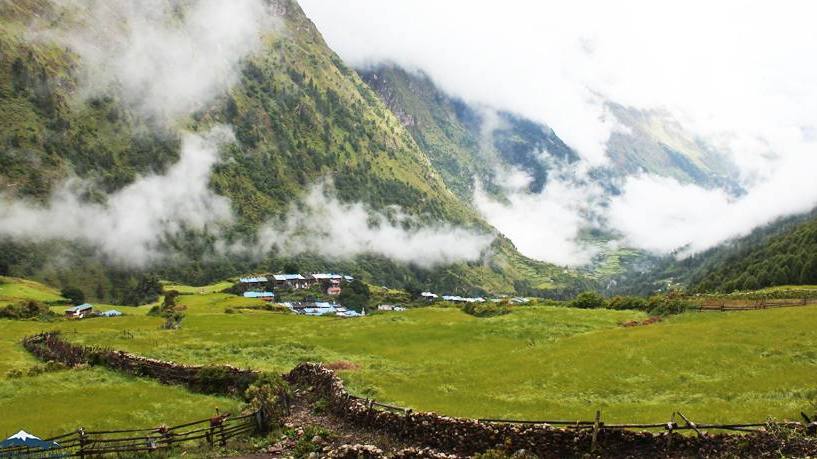
During this season, the lower Mustang region and the Dolpo region, lying in the rain-shadow areas of the Himalayas, are excellent for trekking. These regions receive far less rain compared to the rest of the country, making trekking more feasible. The landscapes in these regions are barren and rugged, offering a stark contrast to the usual greenery associated with Nepal.
The monsoon season also coincides with a few cultural festivals in Nepal, including the Ropain (rice planting) festival. Participating in these festivals provides an authentic taste of local traditions and offers a unique cultural immersion.
Visiting Nepal's cities during monsoon allows for a more leisurely exploration of cultural and historical landmarks without the usual tourist crowds. Kathmandu's UNESCO World Heritage Sites, including the Durbar Squares of Kathmandu, Patan, and Bhaktapur, and sacred sites like Pashupatinath, Swayambhunath, and Boudhanath can be explored at a relaxed pace.
However, travel during the monsoon season requires extra precautions. Always check weather updates and be aware of potential road blockages or delays due to heavy rains. Waterproof gear, including clothing and bags, is essential. It is also advisable to account for possible delays in domestic travel plans due to weather conditions. Despite these challenges, traveling in Nepal during monsoon can be a memorable experience for those seeking a different perspective.
The temperature of Nepal month-wise
Nepal's temperature varies considerably due to the diverse topography and changes in altitude. The southern Terai region experiences tropical weather, the hilly midlands have a moderate climate, and the northern Himalayan region experiences alpine conditions. However, here's a rough guide to the average temperatures in Nepal's capital, Kathmandu:
- January: Minimum -1°C (30°F) / Maximum 19°C (66°F)
- February: Minimum 2°C (36°F) / Maximum 20°C (68°F)
- March: Minimum 7°C (45°F) / Maximum 25°C (77°F)
- April: Minimum 11°C (52°F) / Maximum 30°C (86°F)
- May: Minimum 16°C (61°F) / Maximum 30°C (86°F)
- June: Minimum 20°C (68°F) / Maximum 30°C (86°F)
- July: Minimum 21°C (70°F) / Maximum 29°C (84°F)
- August: Minimum 20°C (68°F) / Maximum 29°C (84°F)
- September: Minimum 19°C (66°F) / Maximum 28°C (82°F)
- October: Minimum 13°C (55°F) / Maximum 27°C (81°F)
- November: Minimum 7°C (45°F) / Maximum 23°C (73°F)
- December: Minimum 2°C (36°F) / Maximum 20°C (68°F)
It's important to note that temperatures can drop significantly in the evening, particularly during the winter months. Also, these temperatures are specific to Kathmandu and may vary in other parts of Nepal, especially in higher altitudes where it gets significantly colder. Always check local forecasts and pack accordingly when planning a trip to Nepal.
Best Months to Visit Nepal - Climate Guide
In the context of climate and tourist activities, here's a month-by-month breakdown of what you might expect when visiting Nepal:
January and February: The coldest months, especially in the mountain regions. If you can handle the cold, the views of snow-covered peaks are breathtaking. Wildlife spotting in the Terai plains, particularly in Chitwan National Park and Bardia National Park, is excellent due to the less dense vegetation.
March and April: Spring is in full swing. The climate is pleasant, making it an ideal time for trekking at lower altitudes. The valleys and forests are adorned with rhododendron blooms. It's also a good time for wildlife spotting as the animals become more active.
May: The start of the warm season. The weather is generally good for trekking, although it can get hot at lower altitudes. The pre-monsoon showers towards the end of the month might make high-altitude treks a bit tricky.
June to August: The monsoon season with heavy rains, makes most trekking routes challenging. However, regions like Mustang and Dolpo lie in the rain-shadow area and are accessible for trekking. These months offer the most lush and verdant views.
September to November: Post-monsoon, the skies clear up, offering some of the best views of the Himalayas. It's the peak season for trekking, with ideal temperatures and less precipitation. Major Nepalese festivals, Dashain and Tihar, are celebrated during these months, offering a glimpse into the rich culture.
December: The start of winter. The weather gets colder, and snowfall makes high-altitude treks more challenging. However, the early part of the month can still be good for lower-altitude treks and sightseeing in cities like Kathmandu and Pokhara.
Ultimately, the best months to visit Nepal depend on what you want to do. For high-altitude trekking, the post-monsoon period (September to November) is ideal. For cultural experiences and wildlife spotting, winter and spring can be fantastic. And for those looking for off-beat experiences, monsoon offers a unique perspective. Always remember to check the current weather and safety guidelines when planning your trip.
The worst time to visit Nepal
While Nepal offers diverse attractions throughout the year, the Monsoon season, which extends from late June to early September, is often considered the most challenging time for travelers. This is primarily due to the heavy rainfall that can lead to various difficulties and constraints.
Here's why the monsoon season might be challenging:
Difficult Treks and Hikes: Heavy rainfall makes popular trekking trails slippery and muddy, increasing the difficulty and risk of trekking. High-altitude regions may also experience landslides and floods, making some trails inaccessible.
Limited Mountain Visibility: The rains bring clouds and fog that often obscure the majestic views of the Himalayas, which are a primary attraction for many visitors to Nepal.
Flight Disruptions: Domestic flights in Nepal, especially those flying to mountainous regions, can often be delayed or canceled due to poor visibility and adverse weather conditions during the monsoon.
Health Concerns: The monsoon season can also lead to an increase in mosquitoes and, consequently, a higher risk of diseases like malaria and dengue fever, especially in the Terai region.
The monsoon season also has its unique charm and attractions. The landscapes are at their greenest, offering stunning scenery. Certain regions like Mustang and Dolpo, lying in the rain-shadow areas, are ideal for trekking even in the monsoon season. And of course, fewer tourists means more opportunities to interact with locals and experience Nepalese culture in a less touristic setting.
Best Time to do Luxury Trekking in Nepal - Climate Guide
Luxury trekking in Nepal offers the thrilling experience of exploring the Himalayan landscapes combined with high-end accommodations and top-notch services. Determining the best time for luxury trekking depends on what you're looking to experience and your tolerance for varying weather conditions. However, there are two peak periods that offer the most conducive weather for trekking: Autumn (September to November) and Spring (March to May).
Autumn (September to November)
Post-monsoon, the skies clear up, and the air becomes crisp, offering some of the best views of the Himalayan ranges. The weather is moderate, not too cold or hot, providing the perfect conditions for trekking. During this time, the trails are less muddy, making it safer and more comfortable to trek. Some of the most popular luxury treks, including the Everest Base Camp Luxury Lodge Trek and the Annapurna Base Camp Luxury Trek, are at their best during this period.
Autumn also sees a few local festivals, such as Dashain and Tihar, where trekkers can participate in local celebrations. However, since it is the peak season, trails can be crowded. Booking in advance is recommended to secure accommodations in luxury lodges.
Spring (March to May)
Spring is another excellent time for luxury trekking in Nepal. The weather is warm and pleasant, and the hillsides are lush with blooming rhododendrons and other wildflowers, making for a spectacular backdrop for your treks. This season is perfect for treks like the Langtang Valley Luxury Trek and the Gokyo Lakes Luxury Trek.
Spring is less crowded than Autumn, providing a more peaceful trekking experience. You might also get the chance to participate in the vibrant festival of Holi, where people play with colors to celebrate the arrival of spring.
Regardless of the season you choose, luxury trekking in Nepal guarantees the comfort of high-quality accommodation, delicious meals, and excellent service, even in the remote corners of the Himalayas. Always remember to check the weather forecast, prepare accordingly, and be ready for unexpected changes, as the weather in the mountains can be unpredictable.
Best Time to Do Luxury Tour in Nepal - Climate Guide
Luxury tours in Nepal offer travelers an unparalleled experience, combining sightseeing, cultural exploration, wildlife adventures, and relaxation in high-end accommodations with world-class amenities. The best time for luxury tours in Nepal typically falls during the country's peak tourist seasons: Autumn (September to November) and Spring (March to May).
Autumn (September to November)
Autumn is one of the most popular times for luxury tours in Nepal. The monsoon rains have usually ceased, leaving behind clear skies and freshly washed landscapes. The moderate temperatures and generally sunny weather make it a great time for sightseeing and exploration.
Whether you're touring the historical sites of Kathmandu, like Pashupatinath, Swayambhunath, and the Durbar Squares, or enjoying a wildlife safari in Chitwan National Park, the weather conditions in Autumn are ideal. This season also offers the best views of the Himalayas, so if your luxury tour includes mountain flights or helicopter rides, Autumn is an excellent choice.
Autumn also coincides with significant cultural festivals such as Dashain and Tihar, offering you a chance to witness and even partake in these vibrant celebrations.
Spring (March to May)
Spring is another excellent time for a luxury tour in Nepal. The weather is warm and pleasant, perfect for outdoor activities and sightseeing. This season is also when the country bursts into color with blooming flowers, especially rhododendrons, which can be an added visual treat during your tour.
Spring is a great time for city tours, cultural site visits, and even short treks. Wildlife safaris in Chitwan or Bardia National Parks are also rewarding during this season, as the animals are more active.
Cultural enthusiasts can enjoy festivals like Holi, the festival of colors, and Ghode Jatra, the horse festival, which takes place in Spring.
Regardless of when you decide to embark on your luxury tour, Nepal promises a rich and diverse experience. Always remember to check the weather updates and plan your activities accordingly. It's also a good idea to book your tour in advance, especially for Autumn tours, as it's a popular time for tourists to visit Nepal.
Best Things to Do in Spring (March to May)
Spring, stretching from March to May, is one of the most delightful times to visit Nepal. It offers warm weather, clear skies, and colorful landscapes adorned with blooming rhododendrons and other flowers. Here are some of the best things you can do in Nepal during Spring:
Trekking: Spring is an ideal season for trekking in Nepal. The weather is comfortable, and the trails are in good condition. Plus, the blooming rhododendrons add a vibrant touch to the landscapes. Popular treks like the Everest Base Camp Trek, Annapurna Circuit Trek, and Langtang Valley Trek are spectacular during this season.
Wildlife Safaris: As the winter chill recedes, animals in national parks such as Chitwan National Park and Bardia National Park become more active. A jungle safari during Spring gives you the opportunity to spot a variety of wildlife, including the Royal Bengal Tiger, One-horned Rhinoceros, Asian Elephants, and many species of birds.
Mountain Biking: Spring's mild weather is perfect for mountain biking. Whether you're riding through the Kathmandu Valley, exploring off-road trails around Pokhara, or taking on challenging rides in the Upper Mustang region, you'll find Spring a great time for this thrilling activity.
Paragliding: Paragliding in Pokhara is a unique experience in Spring. Soaring above the city with panoramic views of the Annapurna range and Phewa Lake beneath you, amidst the favorable thermal conditions, makes for a memorable experience.
Cultural Festivals: Spring is a time of celebration in Nepal. You can participate in the colorful festival of Holi, also known as the festival of colors, and Ghode Jatra, the horse festival. These festivities provide a fantastic opportunity to engage with local communities and immerse yourself in Nepalese culture.
City Tours: The cities of Kathmandu, Bhaktapur, and Patan offer rich cultural and historical tours. Spring is a good time to visit these places, exploring UNESCO World Heritage Sites, local markets, and traditional arts and crafts workshops.
Bird Watching: Spring is when many migratory birds return to Nepal. Visit spots like Pulchowki, Godavari, Nagarjun, and Taudaha for excellent bird-watching opportunities.
Remember to plan and book in advance, as Spring is a popular time for travelers. Enjoy the richness of Nepal's landscapes, wildlife, and culture during this vibrant season.
Best Things to Do in Summer/Monsoon (June to August)
While the Summer/Monsoon season in Nepal (June to August) comes with its own challenges due to heavy rainfall, it also presents unique opportunities to explore and experience the country. Here are some of the best activities to undertake during this season:
Trekking in Rainshadow Areas: Despite the monsoon, you can still go trekking in regions like Mustang and Dolpo, which lie in the rain-shadow areas of the Himalayas. These areas receive less rainfall and thus, the trails remain relatively dry and accessible.
Cultural Tours: You can take advantage of the rains to explore indoor cultural sites, including the rich heritage of Kathmandu Valley. Visiting temples, museums, and art galleries in Kathmandu, Patan, and Bhaktapur offers insight into Nepal's history and culture.
Wellness Retreats: The Monsoon is an excellent time for wellness activities. Nepal is known for its yoga and meditation retreats, especially in the Kathmandu Valley and around Pokhara. These retreats offer a serene environment for relaxation and spiritual growth.
Cooking Classes: You can enroll in Nepalese cooking classes and learn to make traditional dishes like Dal Bhat (lentil soup and rice), Momos (Nepalese dumplings), or Choila (spicy grilled meat).
Whitewater Rafting: The monsoon rains feed Nepal's rivers, making it an exciting time for whitewater rafting. The Trishuli and Bhotekoshi rivers are popular options for this adrenaline-pumping activity.
Visit Lumbini: The birthplace of Lord Buddha, Lumbini, is located in the Terai plains of Nepal, where the weather remains relatively warmer and less rainy compared to the hills. Monsoon is a good time to visit and explore the sacred sites and beautiful monasteries of Lumbini.
Enjoy Local Monsoon Foods: The monsoon season brings with it special local delicacies like fresh corn, yam, and various types of local mushrooms. Trying these can be an exciting culinary experience.
Remember, the monsoon also calls for extra precautions, especially while planning outdoor activities. Always check the weather forecasts, keep your plans flexible, and ensure you're equipped with monsoon gear like waterproof jackets, boots, and umbrellas.
Best Things to Do in Winter (December to February)
Winter in Nepal, from December to February, can be quite cold, especially in the high-altitude regions. The plains and hilly regions experience mild and dry weather, making it an excellent time for various activities. Here are some of the best things you can do in Nepal during the winter:
Wildlife Safaris: Winter is an ideal time for jungle safaris in the Terai region's national parks, such as Chitwan National Park and Bardia National Park. Wildlife, including the endangered Royal Bengal Tiger, One-horned Rhinoceros, and various bird species, can be spotted during these safaris.
Short Treks and Hikes: While high-altitude treks may be challenging due to heavy snowfall and extreme cold, lower-altitude treks are accessible and offer beautiful views of snow-capped landscapes. Ghorepani Poonhill Trek, Kathmandu Valley Trek, and the Tamang Heritage Trail are some excellent options.
Cultural Tours: Winter is a good time for city tours in Kathmandu and the surrounding valley, exploring heritage sites like Pashupatinath Temple, Boudhanath Stupa, Patan Durbar Square, and Bhaktapur Durbar Square.
Mountain Flights: A mountain flight is an unforgettable experience. Winter mornings are often clear, offering stunning views of the sunrise over the Himalayan range. It's a unique opportunity to get a close view of Mount Everest and other towering peaks.
Explore Lumbini: The birthplace of Gautam Buddha, Lumbini is a serene place to visit. Winter is a comfortable time to explore this UNESCO World Heritage Site located in the southern plains of Nepal.
Bird Watching: Winter is when many migratory birds visit the Terai region. Birdwatchers can have a wonderful time in places like Chitwan National Park, Koshi Tappu Wildlife Reserve, and various other wetlands across the country.
Visit Pokhara: The city of Pokhara, with its beautiful lakes and stunning views of the Annapurna range, is a charm in winter. Enjoy a peaceful boat ride on Phewa Lake, visit the World Peace Pagoda, and explore the local markets.
Attend the Lhosar Festival: Celebrated by the Sherpa and Tibetan communities of Nepal, Lhosar marks the Tibetan New Year. Witness colorful processions, traditional music, and dances, and join in the celebrations.
Remember to pack warm clothes if you plan to visit during winter, especially for high-altitude regions. The temperatures drop significantly in the evenings and nights. Stay updated on the weather forecasts and plan your outdoor activities accordingly.
Best Things to Do in Autumn (September to November)
Autumn, from September to November, is considered the best time to visit Nepal due to its moderate temperatures, clear skies, and breathtaking views of the Himalayas. Here are some of the best activities to enjoy in Nepal during this season:
Trekking: Autumn is the peak season for trekking in Nepal. The weather is ideal and the trails are in great condition, offering unobstructed views of the towering Himalayan peaks. Popular treks like the Everest Base Camp Trek, Annapurna Circuit Trek, and the Manaslu Circuit Trek are in high demand during this time.
Mountain Flights: If you're short on time or unable to trek, a mountain flight provides the perfect alternative to witness the majestic Everest and surrounding peaks. These flights, often departing from Kathmandu, provide awe-inspiring views of the snow-capped mountains.
Cultural Festivals: Autumn is a time of major celebrations in Nepal. You can participate in or observe significant festivals like Dashain, the biggest festival in Nepal celebrating the victory of good over evil, and Tihar, the festival of lights.
Wildlife Safaris: Autumn is a good time for wildlife safaris in national parks like Chitwan National Park and Bardia National Park. You can witness a variety of wildlife including, Bengal Tigers, One-Horned Rhinoceros, and various bird species.
Paragliding: In Pokhara, take advantage of the clear autumn skies to paraglide. You can get a bird's eye view of the beautiful Phewa Lake, Pokhara City, and the panoramic mountain range.
City Tours: Tour the culturally rich cities of Kathmandu, Bhaktapur, and Patan. With pleasant weather, you can comfortably explore heritage sites, temples, local markets, and traditional crafts workshops.
White Water Rafting: For thrill-seekers, the Trishuli and Bhotekoshi rivers offer exciting white water rafting experiences in Autumn.
Mountain Biking: With dry trails and pleasant weather, mountain biking in the Kathmandu Valley or around Pokhara is a popular activity during this time.
Remember, Autumn is the peak tourist season in Nepal, so it's advisable to make your bookings in advance to secure your spot for treks, accommodation, and other activities. Always respect local customs, especially during festival times.
Frequently Asked Questions for Best Time to Visit Nepal - Climate Guide
Q: What is the best time of year to visit Nepal?
A: Autumn (September to November) is often considered the best time to visit Nepal due to clear skies and excellent trekking conditions. The "best" time really depends on the activities you're interested in. For cultural exploration and lower-altitude trekking, spring (March to May) is fantastic. Wildlife spotting in the Terai region is best during winter (December to February).
Q: Is it advisable to visit Nepal during the monsoon season?
A: Monsoon season (June to August) typically brings heavy rain, making some trekking routes slippery and prone to landslides. Some regions like Mustang and Dolpo, which lie in the rain-shadow area, receive less rainfall and are good for trekking even during the monsoon.
Q: How cold does it get in Nepal during winter?
A: In the lower-lying areas like Kathmandu and Pokhara, winter temperatures during the day range from 10°C to 20°C (50°F - 68°F). In the Terai region, temperatures can be slightly warmer. However, in the higher altitudes of the Himalayas, temperatures can fall well below freezing, and heavy snowfall may occur.
Q: What should I pack for a trip to Nepal?
A: Packing depends on the time of your visit and the activities you plan to undertake. If you're visiting during the colder months or planning to trek, warm clothing, including thermal layers, a good quality jacket, gloves, and a hat, is necessary. For monsoon travel, waterproof gear, including jackets, trousers, and sturdy waterproof shoes, is essential. Always include a first-aid kit, sunblock, and any personal medication you may need.
Q: Can I go trekking in Nepal during winter?
A: While winter makes high-altitude trekking challenging due to cold temperatures and snow, lower-altitude treks are still accessible. Some popular winter trekking trails include the Poonhill Trek, the Ghorepani Trek, and the lower parts of the Annapurna Circuit. Always check with professional guides or trekking companies about the current conditions before planning a winter trek.
Q: What festivals can I experience in Nepal?
A: Nepal has a rich cultural heritage and hosts various festivals throughout the year. Dashain and Tihar, the most significant Hindu festivals, are celebrated in autumn. Holi, the festival of colors, and Ghode Jatra, the horse festival, occur in spring. If your travel dates align with these festivals, you can witness and participate in unique cultural celebrations.
Q: How is the wildlife viewing in Nepal?
A: Nepal offers excellent opportunities for wildlife viewing, particularly in Chitwan National Park and Bardia National Park, both located in the Terai plains. Winter is an excellent time for a safari as the jungle vegetation is less dense, and many species, including Bengal tigers, rhinos, and various birds, can be spotted.
Important Articles regarding Traveling in Nepal
Introduction of Nepal
Foods in Nepal
Before You Plan a Nepal Trip
While You are in Nepal
Before Traveling Nepal
If you need any further information, please contact us by email: at [email protected], Phone: at +977- 985 100 5129 (WhatsApp)

